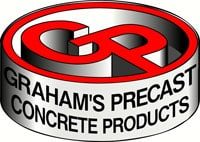5 Signs That Concrete Water Troughs Need To Be Replaced
If you own a farm, you know how vital it is to provide your livestock with clean and fresh water. Water is essential for their health, productivity and well-being. That’s why you need reliable and concrete water troughs that can withstand the harsh climate and the demands of your animals. However, even the best concrete water troughs will eventually show signs of wear and tear. When that happens, you need to replace them as soon as possible. Here are five signs to look out for when deciding if your concrete water troughs need to be replaced.
1. Visible Cracks Or Damage
One of the most obvious signs that concrete water troughs need to be replaced is the presence of visible cracks or damage. Cracks can occur due to various factors, such as temperature changes that cause the concrete to expand and contract, as well as ground movements that cause the concrete to shift or settle. Impacts from animals or vehicles may also cause the concrete to crack or chip. If your troughs are very old, ageing may also cause the concrete to deteriorate or crumble.
Why Cracks Are a Red Flag:
- Water Contamination: Cracks can become breeding grounds for bacteria and algae, posing significant health risks to animals.
- Structural Failure: Large cracks can lead to catastrophic structural failures, potentially causing injury to livestock and necessitating urgent and costly replacements.
- Increased Maintenance Costs: Repairing damaged troughs is often costly and time-consuming. Over time, the expense of frequent repairs can surpass the cost of a new trough, making replacement the more economical choice.
- Impact on Animal Behaviour: Damaged troughs can deter livestock from drinking due to fear of injury or discomfort, leading to lower water consumption. This can affect their growth, milk production and overall health.
2. Water Leakage
Another sign that concrete water troughs need to be replaced is water leakage. Water leakage can result from cracks, damage or faulty valves. It can also occur if the trough is not properly sealed or installed.
Water leakage can have several consequences, such as wasting water and increasing your water bills. It will also reduce the water level and pressure in the trough and can create puddles or mud around the trough, which attracts pests and causes erosion, damaging the surrounding soil.
3. Rough Edges Or Surfaces
Initially designed with the safety of livestock in mind, the smooth edges of concrete troughs can deteriorate over time, becoming rough and abrasive. This wear and tear not only indicates the trough’s age but also poses health risks to animals, potentially leading to cuts, abrasions and subsequent infections.
- Risk to Animals: The welfare of livestock is compromised by rough edges, which can cause injuries or infections to their mouths, noses or eyes.
- Indicator of Age: The condition of the trough’s surfaces can serve as a gauge for its overall condition and longevity, signalling when replacement is necessary.
4. Compromised Float Covers
The float cover is a critical component of a water trough, designed to protect the float valve and maintain consistent water levels. Frequent damage or failure of these covers is a sign that the trough’s protective measures are failing, leading to potential water wastage and exposing livestock to the risk of tampering with or damaging the float mechanism.
The Critical Role of Float Covers:
- Water Efficiency: Ensuring that float covers are intact is crucial for water conservation and the continuous supply of water to livestock.
- Animal Safety: Compromised float covers can lead to situations where animals might damage the float valve, causing water loss and posing a risk of injury.
5. Erosion Around The Base
Significant erosion around the base of a trough can undermine its stability and integrity. This erosion may result from environmental factors such as water runoff or heavy rainfall, poor installation or simply the natural ageing process of the trough. The stability of a water trough is crucial for the safety of the animals. If you notice any erosion around the base of your concrete water troughs, you should fill it in with soil, gravel or concrete or replace the trough if the erosion is too severe or widespread.
Upgrade Your Water Troughs Today
Understanding and acting upon these five signs that concrete water troughs need to be replaced can ensure the health and safety of your livestock and the efficiency of your farm operations. At Graham’s Precast Concrete Products, we offer an extensive range of concrete water troughs designed to cater to various livestock and farm sizes. From smaller round water troughs to larger water troughs capable of servicing extensive livestock, our products are crafted to ensure durability, livestock safety and water efficiency. Contact us today to find out how we can help you maintain a reliable water supply for your livestock.






